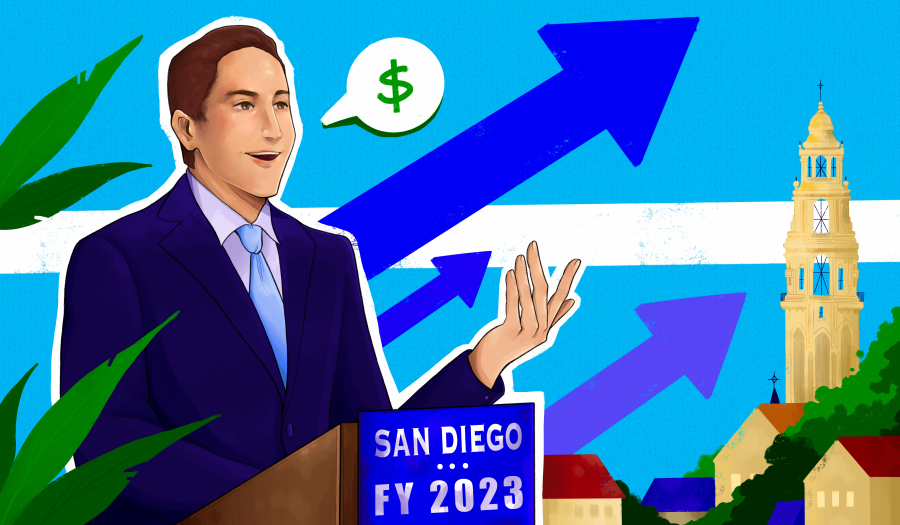On April 15, San Diego Mayor Todd Gloria proposed to spend additional funding for current programs, the arts, homelessness, parks, and boosting San Diego residents’ quality of life. This proposed budget would start July 1, 2022 and would increase city spending in areas that include large infrastructure projects.
With the approval of the proposal, the annual operating budget of the city would rise from $1.74 billion to $1.89 billion. Funding for the mayor’s budget increases will come from increased tax revenue and $180 million from leftover federal pandemic aid. San Diego’s annual pension payment is also decreasing by $31 million because of strong stock market returns in 2020.
The budget would make small increases to many programs and initiatives already in place, including cleaning up sidewalks, increasing security in libraries, and policing vacation rentals. It will also increase aid for small businesses, expand free internet access in low-income areas, and add new parking enforcement teams.
Moreover, the budget allocates almost $300,000 to create a new management center where city officials would survey intersections and immediately change stoplights depending on the number of cars to reduce the amount of traffic in SD. It will also spend $550,000 to create a new team who will replace outdated signal loops.
John Muir College junior Zahrah Mahmood told The UCSD Guardian that she believes this new method would be beneficial for anyone that is driving in La Jolla by decreasing the amount of time people spend on the road.
“Traffic in La Jolla is often very bad and [I am] hopeful that the new budget will make traffic congestion a lot better,” Mahmood said.
In terms of the arts, funding would increase from $9.6 million to $12.7 million. The city plans to spend $4.3 million to recruit more employees with better training in local parks. They also hope to convert many of the part-time workers to full-time.
San Diego’s spending on reducing homelessness would increase from $49 million to $63 million. The funding will be placed towards new shelter beds and stronger street outreach efforts. About $20 million would come from the city, $3 million from the federal government, and $40 million from the state — an increase from their previous aggregate $24.5 million spending.
The city’s general fund reserve will still be $205 million under Gloria’s proposal, which could become crucial in the case of an economic recession.
Furthermore, $13.3 million will be allocated to cover the anticipated pay raises for police officers, firefighters, and lifeguards. The city also plans to increase the income of the workers that make less than their counterparts in other cities.
Currently, there are almost 1,800 vacant city jobs out of the total 11,940 budgeted positions. City officials claim that this is because of uncompetitive salaries.
The city plans to devote $28.4 million to infrastructure under Proposition H, which would cover the $16 million for upgrades to parks, $7 million for sidewalks, and $2 million for fire stations. Another $29.7 million will cover flood prevention and efforts to reduce pollution in stormwater.
San Diego plans to use $120 million of the federal pandemic aid during the ongoing budget year, which still leaves $180 million. Gloria plans to spend $124 million in the next budget year and the remaining $56 million in 2024.
Artwork courtesy of Michelle Deng for the UCSD Guardian.














